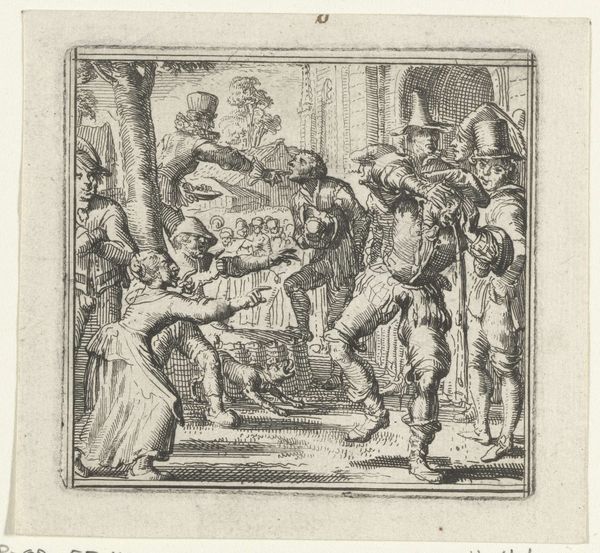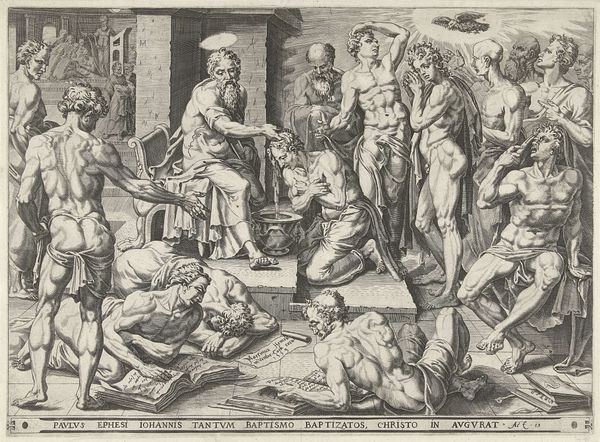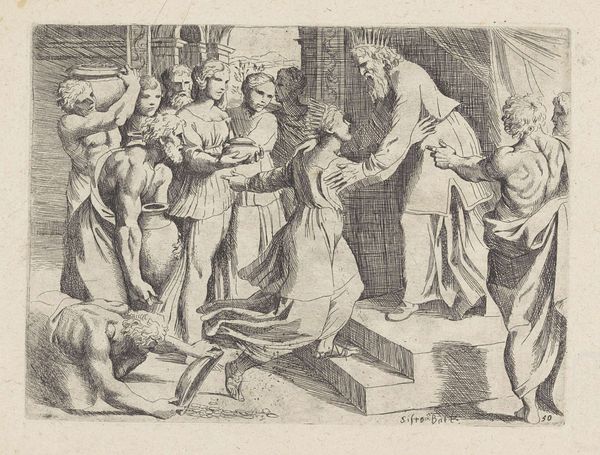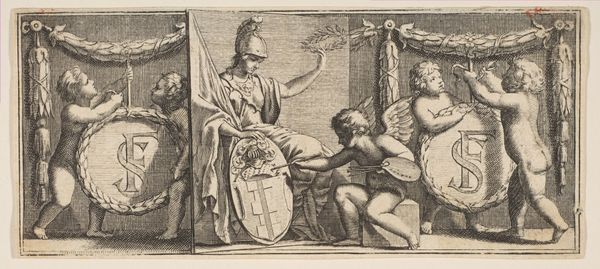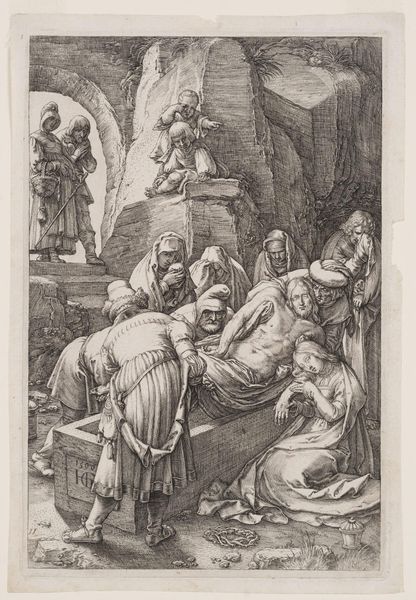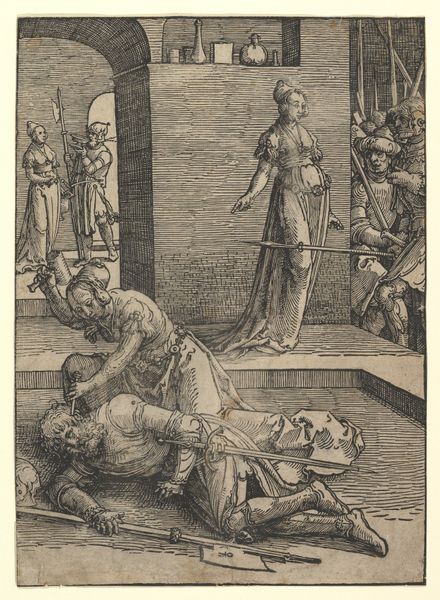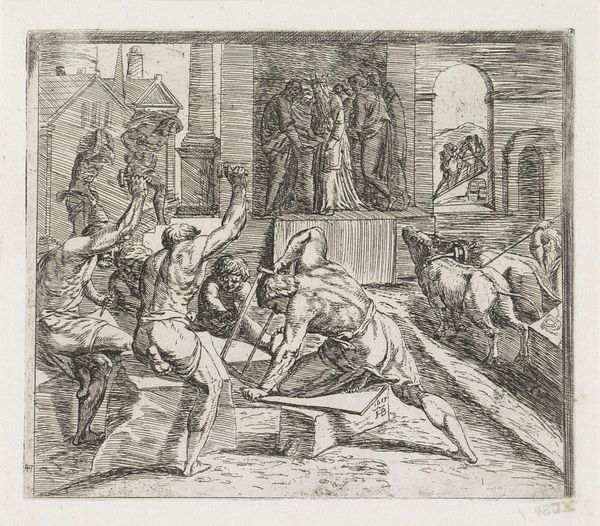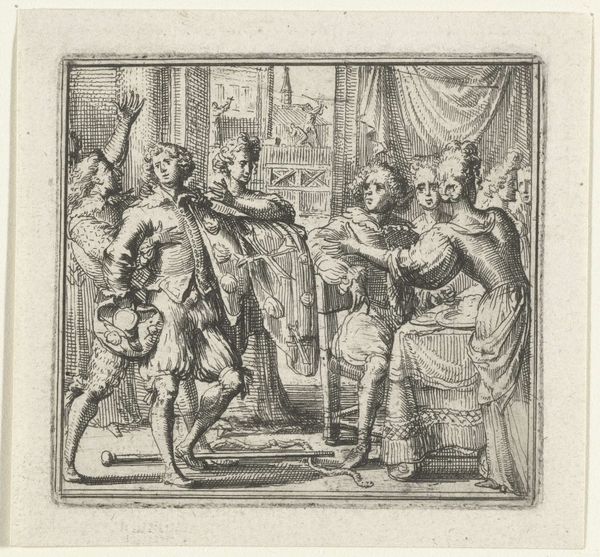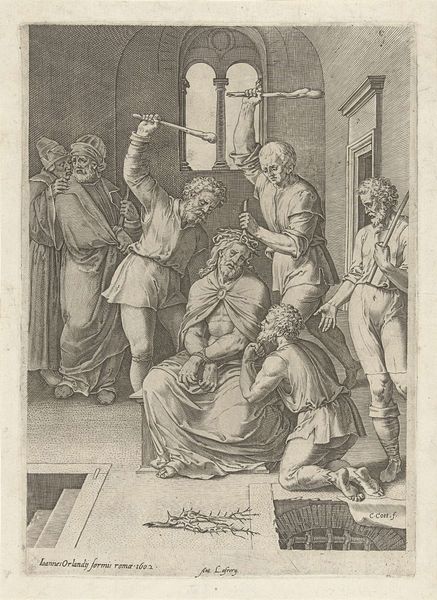
print, engraving
#
narrative-art
#
baroque
# print
#
figuration
#
history-painting
#
engraving
Dimensions: height 164 mm, width 180 mm
Copyright: Rijks Museum: Open Domain
Orazio Borgianni made this print, ‘Isaak zegent Jakob’ – or ‘Isaac blessing Jacob’ – sometime around the turn of the 17th century, using etching. The magic of etching lies in its combination of chance and control. The artist covers a metal plate with a waxy ground, then scratches an image into it with a needle. This exposes the metal, which is then submerged in acid. The acid bites into the lines, creating grooves. Finally, the plate is inked, and the surface wiped clean, leaving ink only in the etched lines. Pressed against paper, it yields a reversed image. The quality of line varies considerably – thick, thin, broken, solid – all depending on the duration of the acid bath, and the pressure applied. The final print therefore has an almost infinite variety of marks. And this is crucial to the image’s expressive power, communicating both detail and overall atmosphere. In its time, printmaking served to democratize images, making them available to a wide public.
Comments
No comments
Be the first to comment and join the conversation on the ultimate creative platform.

